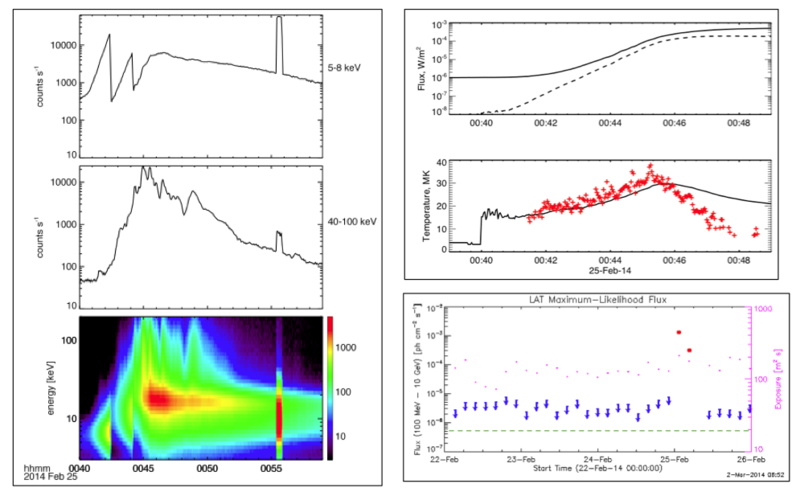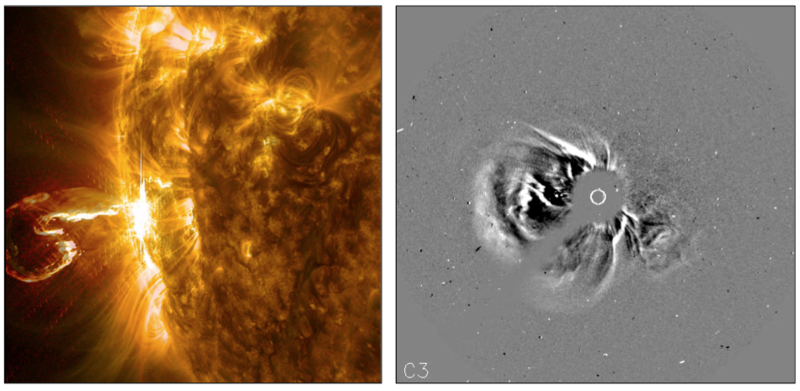A Wonderful Cycle 24 Flare
From RHESSI Wiki
| Nugget | |
|---|---|
| Number: | 218 |
| 1st Author: | S$auml;m Krucker |
| 2nd Author: | Mitsuo Oka |
| Published: | March 3, 2014 |
| Next Nugget: | TBD |
| Previous Nugget: | Instantaneous Flare Properties |
| List all | |
Introduction
Somewhat surprisingly, even this ostensibly weak Cycle 24 has produced 29 X-class flares thus far. Of these the third most powerful, GOES X4.9, just happened a week ago (25 February 2014). Reflecting the weakness of the solar cycle, the active region responsible (NOAA Region11990) had a relatively small sunspot area, only 250 millionths of the solar hemisphere - the biggest groups can be an order of magnitude larger.. But the flare itself was magnificent, and this Nugget just points to early views from RHESSI and other observatories.
The Flare
A RHESSI-centric overview of SOL2014-02-25 can be seen in its specifically tailored Browser page; note that the quick-look images have incorrect roll information, not an important problem but reminiscent of the antipodal flare theory proposed in a Nugget last April 1. Figure 1 shows the spectrogram representation of the RHESSI Data, showing many impulsive peaks and hinting at a soft-hard-harder component.

The high-energy views in Figure 1 show several things. First, the standard spectrogram representation for RHESSI, showing many hard spikes and other systematic behavior. This can be localized to the image position thanks to RHESSI's capabiity for imaging spectroscopy. Second (upper right) the GOES soft X-rays during the rapid impulsive increase; the red temperature points show the incremental approach introduced in the [previous Nugget]. This entire development took only ten minutes. Finally, the lower right showing the remarkable >100 MeV counts from the Fermi LAT instrument; here the high-energy radiations persisted for at least two three-hour increments.
Glimpses of the flare in EUV and coronal images are in Figure 2, with links to their movie versions. A flare of this magnitude almost always produces powerful coronal effects, and this was no exception; in spite of its E limb location, its high-energy particles readily made it to Earth.

| RHESSI Nugget Date | 3 March 2014 + |
| RHESSI Nugget First Author | S$auml;m Krucker + |
| RHESSI Nugget Index | 218 + |
| RHESSI Nugget Second Author | Mitsuo Oka + |